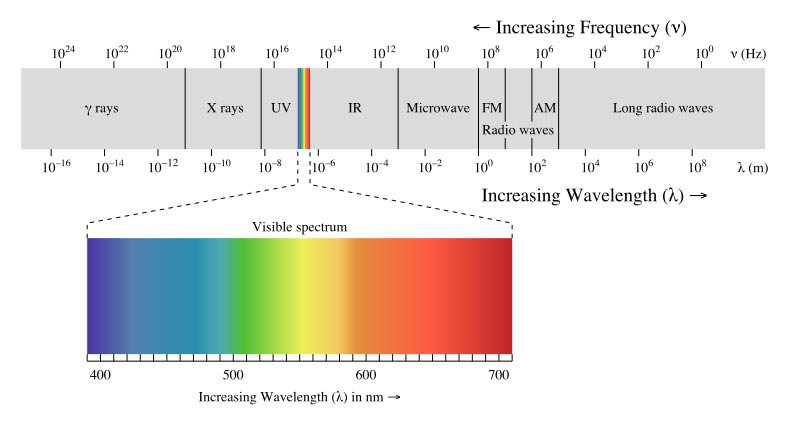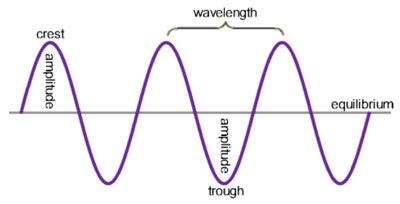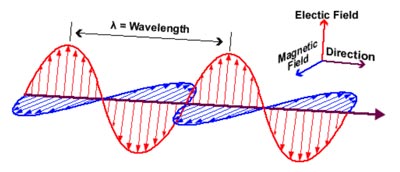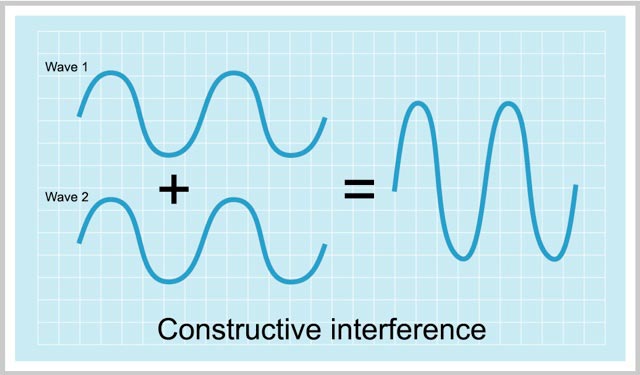The visible spectrum represents only a tiny proportion of the entire electromagnetic spectrum.
There are three important properties of electromagnetic waves:
1. Electromagnetic waves are transverse waves
They follow a sinusoidal pattern much like ripples in water. Sound waves, on the other hand, are longitudinal in nature travel and move by exerting pressure on atoms. The below diagrams show movements of longitudinal and transverse waves along a plane. Here is a transverse wave in 2D. Note the meaning of amplitude and wavelength.
2. Electromagnetic waves have two components: an electric field wave and a magnetic wave
These travel at a perpendicular angle to each other and to the direction of travel and energy transfer.
3. They are additive
That is to say, when two or more waves are superimposed on each other they exhibit constructive or destructive interference and a new wave is formed which is the sum of its two or more constituents. Below are examples of constructive and destructive interference for two monochromatic waves (a wave with a single wavelength).
The relevance and importance of the three properties of electromagnetic waves for photography will become apparent as we look deeper into phenomenons such as diffraction, polarization and aberrations.



